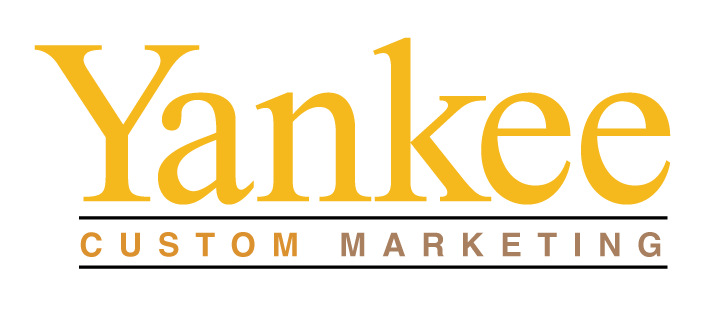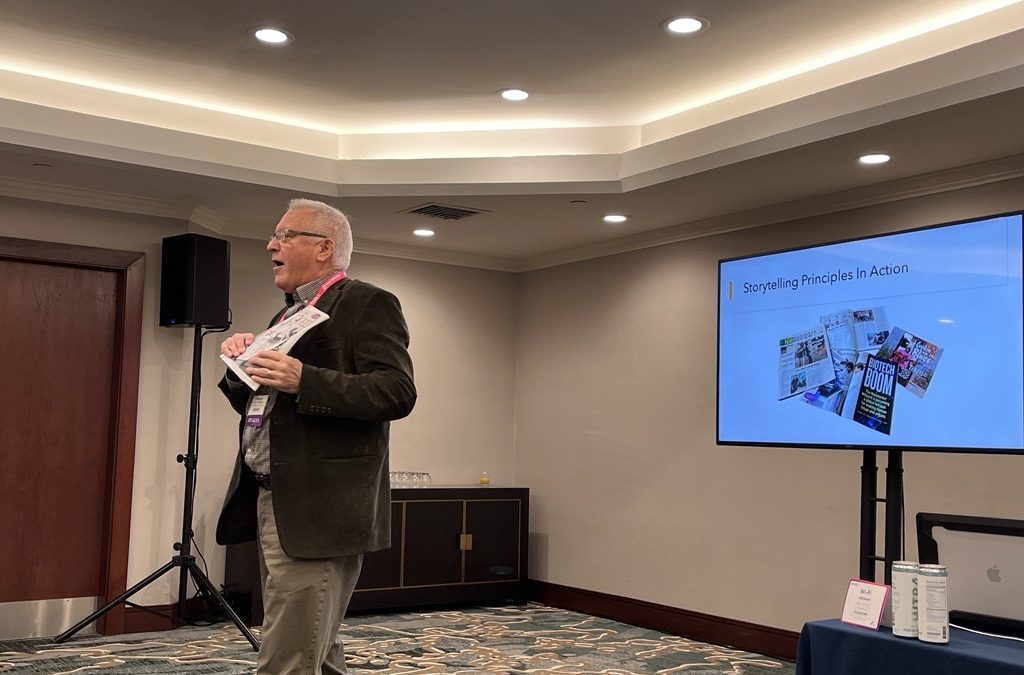Sharing your story is critical for contextualizing information and creating an emotional connection with customers. That was the message shared by Yankee Custom Marketing Publisher Ernesto Burden in “Story-Driven Content Marketing,” a session at the ACCESS 2024 conference hosted by the Greater Manchester Chamber in September. Burden, joined by New Hampshire Business Review and New Hampshire Magazine editor Mike Cote, explained how storytelling was necessary for content creation to help businesses and consumers navigate data overload and build relationships.
The process can be outlined into three steps: document, produce and distribute.
Document: Capture the content pieces you need, whether video, written stories, photography, case studies or other collateral.
Produce: Shape those pieces into a story, considering the best formats for the channels you plan to use.
Distribute: Share on your various channels, keeping in mind best practices to expand reach such as SEO optimization, tagging and appropriate audience segmentation.
Everyone can be a Storyteller
“Every day, you talk to people. You convince them of your vision, you let them know what’s happening, you put their world in context, and you tell them stories,” Burden said. “I think that that’s true for all of us.”
The first step Burden recommended to those getting started with storytelling was to consider the audience. Make the story about them, not you. Find a topic that shows you can solve a problem for them, and then present your explanation without heavy jargon.
“As marketers, it’s tremendously useful to use stories to put your product into the context of people’s lives in a way that is emotionally meaningful and in a way that they remember,” he said. “And that’s two things that stories do really well.”
There are several frameworks for writing a story, and most follow a similar template with an inciting incident as a set-up, a rising action to a problem, and a falling action to a resolution.
A good story:
-Hooks the audience from the start, usually at a moment of change.
-Shows, doesn’t tell
-Develops tension and conflict
-Evokes emotion
-Is believable and authentic
Using Stories in Content Creation
“What’s content marketing? Content marketing is the marketing and business process for creating and distributing valuable and compelling content to attract, acquire and be a clearly defined and understandable target audience,” Burden said, quoting Joe Pulizzi. “Create interesting and useful information that solves a problem for your customer.”
When using content to tell your story, he advised creators to conduct web searches, review analytics, and collaborate across the company. Then, consider content’s role as part of a larger strategy. By completing that background, you know what kinds of information your customers are already seeking out.
Burden noted that an omnichannel marketing strategy can accelerate quality content creation.
“If you’re telling great stories, they can go out across all these other channels,” Burden said. “So, we’ll do a video. As we’re doing the video, we’ll have somebody who’s there as a producer … who’s going to be writing a feature story based on what we’ve learned as we’re shooting that video. By the time you’re done with that video and feature story, you have enough content for Facebook and LinkedIn and for reels. … You’ve already done the content collection once. And you’ve already tackled the most important part of it, which is finding out what the heart of the story is.”
Burden said that companies should come up with a schedule they can be consistent in keeping. That makes them more reliable for their customers and can help improve their SEO ranking.
Stories are sticky
In his presentation, Cote showcased how brands use storytelling in content creation to build trust of their products and services, even when the story wasn’t about themselves. Those connections create a more lasting memory than just presenting data, even compelling data, to customers.
“You might remember a fact if it’s delivered in a certain way. But you will remember how something made you feel, right?” Cote said. “You remember maybe the detail. … But you’re not going to remember a fact unless it’s delivered in a certain way.”
He shared a publication he’s had for 30 years that was part of Tabasco’s marketing strategy.
“Cookin Up the Blues with Tabasco Brand Pepper Sauce” features articles on musicians alongside personal recipes, which all use Tabasco. The articles aren’t about the hot sauce, they’re about people. But because of the interesting nature of the biographies, paired with the utility of the recipes, those qualities are associated with Tabasco.
Cote also encouraged storytellers to be transparent, even if there’s a negative aspect. If you gloss over challenges, your story won’t have authenticity, which can break your audience’s trust.
Trust and Tech
The discussion on authenticity then spilled into using AI for content creation. Burden recommended using AI for brainstorming, outlining, researching (paired with factchecking), SEO optimization, meeting summaries, and proposals.
He urged creators to avoid using it for customer-facing content, as it won’t feel authentic. People want to build relationships with people, not with robots.
You want your content to stand out and be original, something that your audience can’t find anything else.
“I 100% do not believe that AI will be doing all of the content, because AI can’t replicate the storytelling process,” Burden said. “It cannot do the collection and the engagement required to tell real, authentic stories.”
AI is a great tool for finding out who your audience is and what they need. Then it’s up to you to deliver high-quality, authentic and useful information.
“Storytelling is going to need to get better, to cut through than morass of low-quality trash content that’s out there,” Burden said. “That just means we really need to know who our audiences are, really well. Happily, AI tools will help do that part of it. It really customizes the great content that we’re making for individual readers.”
To learn more about crafting authentic stories that captivate your audience and elevate your brand, join our free upcoming webinar on Oct. 29. Burden and Cote will continue a deep dive into the strategies and techniques that can help your brand create compelling narratives that resonate with your target audiences.

